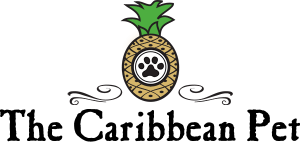- Languages: Dutch and English
- Currency: Netherlands Antillean florin or guilder
- Temperature: Average 80°F year-round
- Square Miles: 11.8 Approx.
- Population: 2,900
ABOUT. St. Eustatius, Sint Eustatius, also known as Statia or Statius, is a Dutch Caribbean island with a rich history. Statia or “Stay-sha”lies in the northern Leeward Islands portion of the West Indies, southeast of the Virgin Islands, immediately to the northwest of Saint Kitts & Nevis and to the southeast of Saba. The first inhabitants of Statia were the Saladoids, who arrived in sea faring canoes from South America before the end of the 15th century. The name of the island, “Sint Eustatius”, is the Dutch name for Saint Eustace a legendary Christian martyr. The island was seen by Christopher Columbus in 1493 and claimed by many different nations. From the first settlement, in the 17th century until the early 19th century, St. Eustatius changed hands twenty-two times. In 1636, the Dutch West India Company took possession of St. Eustatius, Sint Maarten, and Saba which all fell under Dutch control. A commander was stationed on St. Eustatius to govern all three islands by 1678. Tobacco and sugar were also cultivated on the island during this period.
In the 1600’s, slaves of African descent were brought to the island to cultivate the land, which had more than seventy plantations. During the 1700s, the capital, Oranjestad, was a major port for slave traders and merchants who came to trade slaves, sugar, and cotton. During the latter part of the 17th century and throughout the 18th century, St. Eustatius was a major trading center. In the 18th century, St. Eustatius’ location in the middle of Danish, French, and Spanish territories served as a free port with no customs duties and its economy flourished. At this time, most all of the seafaring people knew of the “Golden Rock” as they called the island. By the end of the 18th century, slavery became outlawed in the Dutch Antilles. Formerly part of the Netherlands Antilles, Sint Eustatius became a special municipality within The Netherlands on 10 October 2010.
Geographically, St. Eustatius is mostly undeveloped volcanic island. Only 11 square miles with 2 volcanoes, 21 forts and outposts, a botanical garden, more than a dozen hiking trails in the Quill/Boven National Park, old cemeteries, a restored old town, and a marine park containing some of the best diving in the Caribbean. Much of its coastline is quite rugged but with some inns and restaurants for tourists to visit. Scuba divers are drawn to Statia to explore a hundred sunken ships, while others come to climb the Quill volcano and see the lush forest growing from its crater. In Oranjestad, you can visit historic Fort Oranje, the Dutch Reformed Church, and the St. Eustatius Historical Foundation Museum.
St. Eustatius helps to protect nature and the marine life. The St. Eustatius National Parks Foundation, known locally as Stenapa is responsible for helping to promote ecotourism and the appreciation of visiting such a beautifully natural island. Stenapa oversees the National Parks including The Quill is a dormant volcano with a tropical rainforest and the Boven Subsector which is an extinct volcano on the north end of the island. Stenapa is an environmental organization dedicated to preserving the marine/land environment and monitor and protect endangered species. One of Stenapa’s marine projects was to create the St. Eustatius Marine Park that opened in 1998. The formation of the Marine Park helps preserve the underwater nature. The seas around Statia are considered amongst the most pristine in the world. The Marine Park covers the sea floor and the waters from the high water mark down to the 30-meter (100 ft.) depth. It encompasses areas from the Gallows Bay to White Wall area; from Jenkins Bay to North Point as well as Oranjebaai. To protect the coral reefs from damage, anchoring is not allowed in the Marine Park areas.
Today, people of more than 20 nationalities live in peace and harmony on this beautiful Dutch Caribbean Island. Many tourists visit the island each year as well to enjoy the beauty and splendor all around.

